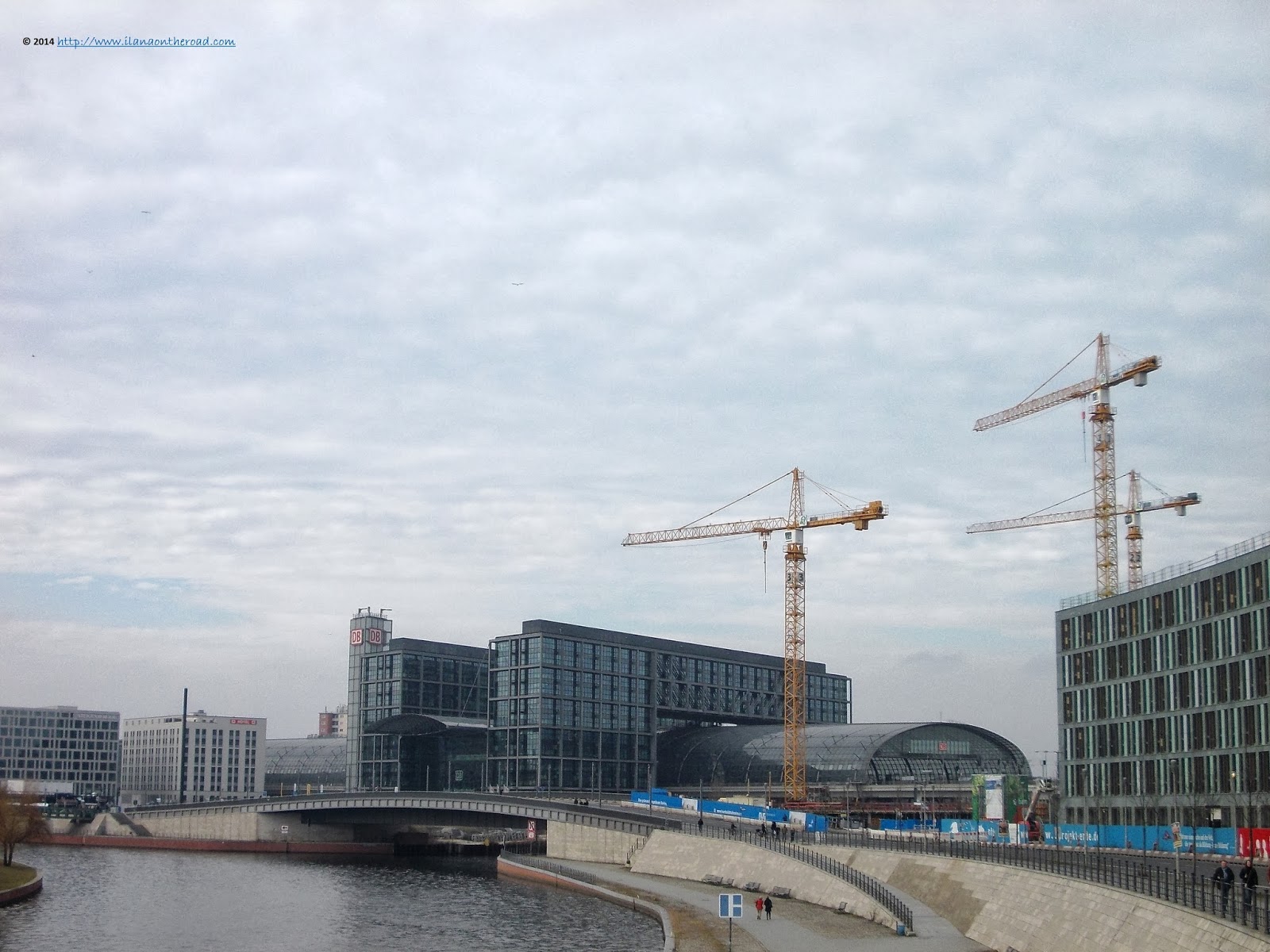Spring was early in Berlin this year, and the winter almost non-existent! Overwhelmed by so many sunny days, I spent a lot of Sundays outdoors, discovering old corners and revisiting old ones. Not necessarily on purpose, one of those days, I decided to discover by foot the area around Invalidenstrasse. I left the bus around Reichstag/Bundestag that I visited at least twice since moving here. Right now, the visitors should register online a couple of days in advance. There are long lines of visitors always, but as far as I remember, it goes relatively easy and within 30 minutes you can start the tour.
After the visit, one can admire the new diplomatic and governmental architecture, a topic that I promise to come back in detail soon. As it was Sunday, there was no one to be seen around the otherwise busy offices.
The Central Station/Hauptbahnhof remains a benchmark of my first ever visit to Berlin and Germany. Since then, almost 10 years later, there is still a lot of work around as the constructions seem to be a permanent work in process not only in this area, but in the city in general. 25 years after the fall of the Wall, the city is still looking for its architectural identity.
But there are also things that don't change too much, some of them for many centuries. The Museum of Natural Science is a destination in the area for over 200 years. I visited it a couple of weeks before and was surprised to see how many people of all ages are curious about science. At the first floor, there is a collection of minerals from all over the world. After the separation of the city, the museum was part of the GDR and many scientific travels took place in former communist countries, such as the Soviet Union, Cuba or Mongolia.
There is a lot of work going on around Invalidenstrasse right now, for the reconstruction of the tram line. The area promise to be one of the new centers of attraction in West Berlin. There are many bars and hotels around, many newly open, such as the welcoming Hotel i31, that I visited a couple of months ago.
Close to the Central Station, if you walk for around 10 minutes, you will discover the medical compound of Charité hospital, the oldest and most famous medical institution of the city, and the largest university hospital in Europe. Statues of famous characters of the German medical history are everywhere. One of them is Albrecht von Graefe, labelled the 'father' of German ophthalmology, whose son bearing the same name chose to follow a sinister far-right career.
Many of the buildings were originally erected at the beginning of the 20th century. Kaiserin Friedrich Haus, is nowadays part of the scientific network of the hospital, but during the GDR it hosted the Academy of Arts.
We enter inside the Charité compound, walking silently the labyrinth of sober red bricked houses. The hospital was initially established at the beginning of the 18th century, in the aim to counter the effects of bubonic plague. It was used for a long time as a charity (hence the name, in French, sign of the constant influence of the French culture in the Brandenburg area) hospital for the poor. Nowadays, is treating high-end personalities and any kind of maladies. One of the recent hosts is the Ukrainian politician Yulia Tymoshenko.
The Museum of Medical History was on my priority list for a very long time. Now, I was finally able to have a visit that included an exhibition about the evolution of the relationship between doctors and patients. A whole level is dedicated to various physical deformities and the evolution of investigation practices. If you visit the museum if children you should sign a declaration that you agree that they are exposed to such scientific realities.
The museum also preserved the anatomical theatre, once used for dissections. There are also a section covering the use of medicine for political means during WWII, relatively in a discrete corner.A trip to this museum is very intense, but otherwise, on the opposite part of the road, there is the more brain friendly Museum of contemporary arts, in the former Hamburger station.
But we did not want any museum for the moment, until walking Torstrasse we found a very special one: The Surrealist Museum of Industrial Objects. The name reminds me of my long 'dadaist' period and is hilariously sympathetic.
From there, we walked a little bit more till Oranienburgerstrasse, a colourful oasis full of locals and visitors enjoying the first sights of the spring. Hungry, decided that it is about time for a stop and the Kebab Baba, a Turkish place I didn't notice before - maybe because is near the very popular Dada Falafel, where I used to go quite often some time ago - was inviting enough. But despite the traditional interior, I preferred to eat outside, enjoying both the food and the show of the street.
With my 'veggie dish', I tried to catch up with the lost energy after hours of wandering the streets and museums. The combination was great: salad, a borek, falafel, potatoes, eggplants and couscous. Authentic, rich and healthy enough. A good treat at the end of the day.
After a couple of months when I avoided to walk for too long in the city, the spring reminds me that Berlin can be not only beautiful, but interesting enough to keep me outside for more than 8 hours. It can be the beginning of a new old routine.














Keine Kommentare:
Kommentar veröffentlichen